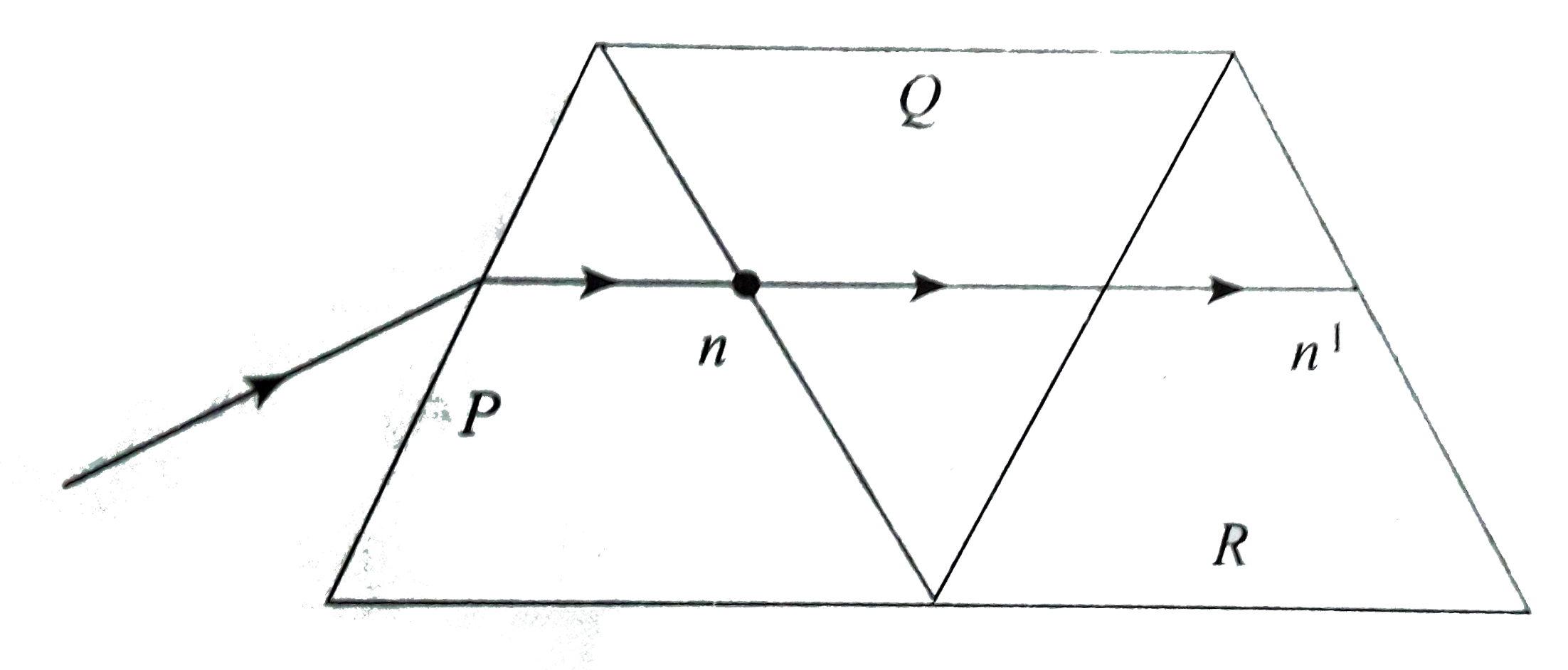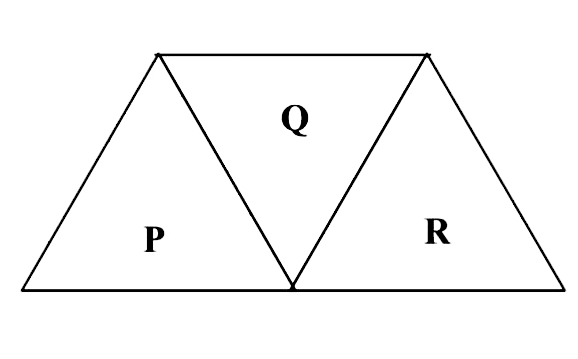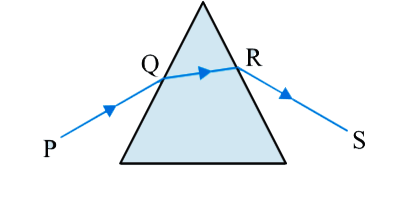A given ray of light suffers minimum deviation in an equilateral prism P. Additional prism Q and R of identical shape and of the same material as P are now added as shown in figure. The ray will now suffer

greater deviation
no deviation
same deviation as before
total internal reflection
The correct Answer is:c.
Since there will be no refraction from P to Q and then from Q to R (all being identical). Hence, the ray will now the same deviation as before the point n, being same for the ray.
Correct option is(c).
Topper's Solved these Questions
- GEOMETRICAL OPTICSBook:CENGAGE PHYSICSChapter:GEOMETRICAL OPTICSExercise:Multiple Correct Answers Type
Explore 8 Videos
- GEOMETRICAL OPTICSBook:CENGAGE PHYSICSChapter:GEOMETRICAL OPTICSExercise:Assertion-Reasoninig Type
Explore 2 Videos
- GEOMETRICAL OPTICSBook:CENGAGE PHYSICSChapter:GEOMETRICAL OPTICSExercise:True/False
Explore 5 Videos
- FRICTIONBook:CENGAGE PHYSICSChapter:FRICTIONExercise:QUESTION BANK
Explore 1 Video
- GRAVITATIONBook:CENGAGE PHYSICSChapter:GRAVITATIONExercise:Question Bank
Explore 39 Videos
Similar Questions
A ray of light suffers a deviation of 3.2∘ on passing through a thin prism of angle 5∘. What is the refractive index of the material of the prism ?
View SolutionA ray of light suffers a minimum deviation when incident on equilateral prism of refractive index √2 The angle of deviation is
View Solution
Knowledge Check
A given ray of light suffers minimum deviation in an equilateral prism P. Additional prisms Q and R of identical shape and of same material as P are now added as shown in figure. The ray will now suffer
 Ano deviationBgreater deviationCsame deviation as beforeDtotal internal reflection
Ano deviationBgreater deviationCsame deviation as beforeDtotal internal reflectionA given ray of light suffers minimum deviation in an equilateral prism P. Additional prism Q and R of identical shape and of the same material as P are now added as shown in the figure. The ray will now suffer
 Agreater deviationBno deviationCsame deviation as beforeDtotal internal reflection
Agreater deviationBno deviationCsame deviation as beforeDtotal internal reflectionA given ray of light suffers minimum deviation in an equilateral prism P. Additional prism R and Q of indentical shape, size and material are added to P as shown in the figure. The ray will suffer
 Aseme deviationBgreater deviationCno deviationDtotal internal reflection
Aseme deviationBgreater deviationCno deviationDtotal internal reflection
A ray of light suffers a minimum deviation when incident on an equilateral prism of refractive index √2 The angle of incidence is
View SolutionA ray of light suffers minimum deviation when incident on an equilateral prism of refractive index √2 . What is the angle of incidence ?
View SolutionA ray of monochromatic light suffers minimum deviation of 38∘ while passing through a prism of refracting angle 60∘ . Refracting index of the prism material is
View SolutionA ray of light is incident on an equilateral glass prism placed on a horizontal table. For minimum deviation which of the following is true:

View SolutionA ray of light suffers minimum deviation while passing through a prism of refracting angle A . If the angle of incidence i = Refractive angle and n =√3 , find the angle of the prism .
View Solution